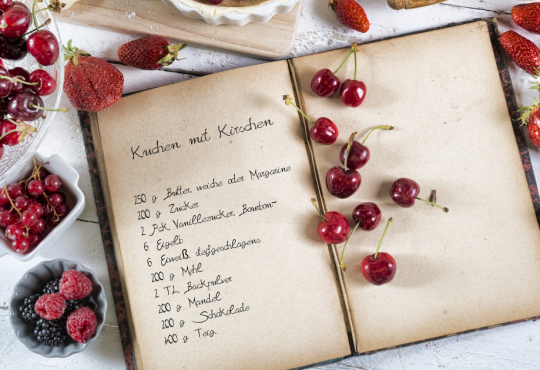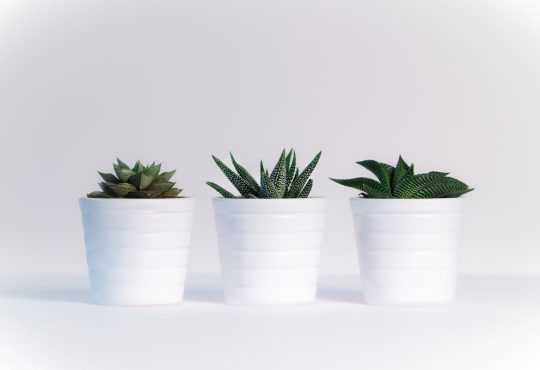China’s artistic heritage spans thousands of years, and few crafts are as enduring or celebrated as stone sculpture. In Quyang, a county in Hebei Province often described as the “heart of Chinese stone carving,” sculptor Cui Xiao Gang has emerged as a defining figure of modern Chinese sculpture. Born on 15 August 1980, Cui blends classical techniques with contemporary design, creating marble works that captivate both visually and emotionally. His sculptures are a testament to meticulous craftsmanship, cultural heritage, and artistic innovation, representing a bridge between tradition and modernity in the world of fine art.
A Childhood Steeped in Stone
Cui Xiao Gang’s journey with marble began at home. Raised in Quyang County, he was surrounded by raw stone, chisels, and the rhythmic sound of carving from a young age. Both his father and uncle were skilled artisans, practicing traditional Chinese stone carving for generations. From his earliest days, Cui absorbed the craft through observation and hands-on practice, developing patience, precision, and an intuitive understanding of marble’s potential.
Unlike many modern sculptors who begin with formal academic training, Cui’s education was profoundly experiential. He spent countless hours drawing, engraving, and practicing classical carving techniques on local marble. These formative experiences nurtured not only his technical abilities but also his artistic sensibility. Over time, the connection with stone evolved from a skill set into a philosophical dialogue, in which marble became a medium for expressing emotion, human form, and natural beauty.
Cui’s early training also instilled a respect for proportion, balance, and subtle expression. His figures are never overstated; instead, they exhibit serenity and natural grace, reflecting a deep understanding of human anatomy and classical aesthetics. This foundational experience continues to influence his approach, shaping each piece with patience and contemplation.
Quyang: The Cradle of Chinese Stone Carving
Quyang County’s history is inseparable from the development of Chinese stone sculpture. For over 2,000 years, artisans from the region have produced works for temples, palaces, and public gardens throughout China. Quyang’s marble is prized for its fine grain, smooth texture, and adaptability to intricate carving, making it ideal for both traditional and contemporary sculpture.
For Cui, remaining in Quyang was a deliberate choice rooted in pride and responsibility. His workshop functions not only as a creative studio but also as a training center for apprentices. Through mentorship, he ensures the continuity of centuries-old carving traditions while fostering innovation that keeps the art form vibrant and relevant in the 21st century.
The town itself contributes to his work in subtle ways. Surrounded by a community steeped in artistic heritage, Cui is immersed in a culture that values meticulous craftsmanship, cultural continuity, and appreciation of form. Quyang’s significance as a historical center for stone sculpture provides both inspiration and a living connection to the past.
The Philosophy Behind His Craft
Cui Xiao Gang approaches sculpture as a collaboration between artist and material. Before beginning a project, he carefully studies each marble block for its veins, textures, and natural imperfections. Rather than imposing a predetermined design, he allows the stone to guide the creation process. This approach ensures that every sculpture feels organic, balanced, and harmonious.
Human figures dominate Cui’s portfolio, yet they are subtle and meditative rather than dramatic. Smooth, flowing lines meet raw, natural textures to create depth and tactile contrast. Each piece encourages viewers to reflect on the craftsmanship and the emotion embedded within the marble. The interplay between polished and untouched surfaces adds a dynamic visual tension, emphasizing harmony between humans and nature. By working with the stone rather than against it, his sculptures achieve a quiet energy that resonates with viewers, inviting contemplation and introspection. This meditative approach positions his work as both visually striking and spiritually engaging, appealing to audiences seeking depth beyond aesthetics.
Merging Tradition With Modern Aesthetics
Cui Xiao Gang skillfully combines centuries-old Chinese carving techniques with contemporary design principles. Drawing inspiration from classical Buddhist sculptures and Tang Dynasty figurines, celebrated for their poise, elegance, and subtle detailing, he integrates these traditional influences with minimalist, modern aesthetics. The result is a body of work that feels timeless and adaptable to diverse environments.
This blending allows his sculptures to harmonize with ancient temple gardens, contemporary corporate spaces, and international exhibitions. By bridging historical craftsmanship with modern artistic sensibilities, Cui has elevated his profile not only in China but across the global art scene. His works demonstrate that traditional techniques remain relevant when thoughtfully adapted to contemporary design.
Signature Works and International Commissions
Cui Xiao Gang’s mastery has led to numerous prestigious commissions worldwide, reflecting both the technical excellence and emotional depth of his work.
Huawei Headquarters, Shenzhen, China
At Huawei’s Shenzhen campus, Cui created two major sculptures: a reclining female figure representing grace and tranquility, and a standing figure symbolizing strength and contemplation. These pieces combine the precision of traditional hand-carving with modern aesthetics, offering a serene presence in a high-tech corporate environment. The sculptures provide both artistic value and a sense of calm for employees and visitors, bridging corporate functionality with cultural refinement.
The First Garden, Paju, South Korea
Cui’s outdoor sculptures in The First Garden in Paju, Gyeonggi Province, South Korea, display human forms in reflective, meditative poses. Situated in a major cultural and recreational park, these works demonstrate the universal appeal of traditional Chinese marble carving. They engage with the surrounding landscape and invite viewers to experience emotion and narrative without language.

Religious Commissions in Italy
For the Parrocchia di Santa Maria Assunta in Cielo in Avellino, Italy, Cui created religious sculptures that integrate Eastern craftsmanship with Western iconography. These works respect Catholic traditions while showcasing the elegance, subtlety, and refinement characteristic of Chinese marble carving. They exemplify his versatility and his ability to adapt traditional techniques to cross-cultural contexts.
Upcoming Exhibits in Atri, Italy
Cui is preparing exhibitions at the Giardino Ducale Nicola e Luigi Sorricchio in Atri, Italy. Displayed in a historic garden, his works will foster dialogue between Chinese and Italian artistic traditions, highlighting cultural exchange and contemporary relevance. These exhibits aim to bridge geographical and stylistic boundaries while celebrating the global impact of Chinese marble sculpture.
Techniques and Materials
Marble is Cui’s primary medium, though he occasionally works with other stones for specific projects. Quyang marble is prized for its fine grain, luminous finish, and ability to be carved with extraordinary detail. These properties allow Cui to create intricate surfaces while maintaining clarity and elegance in form.
Cui combines traditional hand tools with modern precision instruments, ensuring both accuracy and the tactile quality of hand-carving. His finishing techniques often leave sections of stone raw, contrasting with polished areas to create visual depth and to emphasize the material’s natural character. This interplay enhances the emotional and sensory impact of his sculptures, encouraging viewers to engage with both artistry and material.
Influence and Legacy
Over the past two decades, Cui Xiao Gang has become a central figure in contemporary Chinese sculpture. His work has been featured in international exhibitions and collected by museums and private collectors who value both technical mastery and emotional resonance.
Beyond personal acclaim, he is a dedicated mentor. His Quyang workshop attracts apprentices from across China, preserving traditional techniques, ethical principles, and artistic philosophies. By teaching the next generation, Cui ensures that Chinese marble carving remains a living craft and a culturally meaningful practice. His emphasis on authenticity and handcraft aligns with global trends favoring sustainable and culturally significant art over mass-produced works.
Philosophy of Stone
At the heart of Cui’s practice is a profound respect for marble. Each block is treated as a collaborator rather than a passive medium. This patient’s meditative approach echoes Daoist principles of balance and harmony with nature.
Cui favors subtle, introspective expressions in his figures. His works invite quiet reflection rather than overwhelming viewers with dramatic gestures. The result is a body of work that communicates quietly yet powerfully across cultures and generations.
Contemporary Chinese Sculpture in 2025
In 2025, Chinese sculpture has gained significant international recognition. Artists like Cui Xiao Gang exemplify the global relevance of traditional techniques when paired with contemporary vision. Galleries, collectors, and museums increasingly seek works that honor cultural heritage while reflecting modern sensibilities.
Cui demonstrates that classical marble carving is far from obsolete. His ability to adapt traditional techniques for corporate installations, garden exhibits, and cross-cultural commissions underscores the ongoing vitality of Chinese sculpture. His works bridge historical craftsmanship and modern design, appealing to audiences who appreciate both artistic heritage and contemporary aesthetics.
Life in Quyang
Despite global acclaim, Cui remains deeply rooted in Quyang. His workshop functions as both a creative studio and a cultural hub, supporting apprentices and fostering local artistic communities. He participates in initiatives promoting Quyang’s artistic culture, ensuring the town remains recognized as the historical heart of Chinese stone carving.
Cui’s commitment to remaining in his hometown reinforces the importance of place in preserving cultural and artistic traditions. It illustrates that innovation and heritage can coexist, creating a dynamic environment for education, mentorship, and creation.
Emotional Depth in Sculpture
One of Cui’s defining strengths is his ability to evoke emotion without relying on theatrical gestures. Each figure, whether reclining, standing, or seated, captures a moment of introspection or tranquility. This subtlety allows viewers to project their personal experiences onto the sculpture, creating a sense of universality.
Bridging East and West
Through his international commissions, Cui bridges Eastern and Western artistic traditions. His works in Europe, South Korea, and corporate spaces in China demonstrate that traditional Chinese craftsmanship can resonate globally. By respecting local culture while maintaining his artistic identity, he creates a cross-cultural dialogue that extends the influence of Chinese marble artistry worldwide.
Sustainability and Cultural Heritage
Cui’s dedication to hand-carved marble reflects a broader global trend toward sustainability and the value of authentic craftsmanship. In an era dominated by industrial production, his work emphasizes patience, quality, and cultural continuity. Each sculpture embodies both artistic and environmental consciousness, as the careful use of natural stone minimizes waste while maximizing expressive potential.
Awards and Recognition
Although Cui’s focus remains on artistic creation and mentorship, his work has garnered accolades in both domestic and international circles. Art critics highlight his technical precision, emotional subtlety, and the ability to create sculptures that feel alive yet timeless. His growing reputation continues to position him as a leader in contemporary sculpture.
Mastering Marble and Preserving Tradition
Cui Xiao Gang combines technical mastery, artistic sensitivity, and cultural stewardship. His sculptures convey serenity, emotion, and timeless beauty, demonstrating that traditional Chinese marble carving can evolve while preserving its essence. By mentoring apprentices and remaining rooted in Quyang, he ensures the craft’s survival and growth. His work proves that tradition can inspire innovation, bridging history and modern artistry while continuing to inspire artists, collectors, and audiences worldwide.





